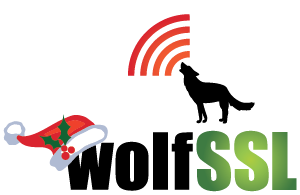Are you looking for an SSL/TLS library which will seamlessly integrate into your bare metal or No-OS environment? If so, continue reading to learn why the wolfSSL lightweight SSL library is a perfect fit for such environments. wolfSSL has been designed with portability and ease of use in mind, allowing developers to easily integrate it […]
Read MoreMore TagCategory: Uncategorized
Certificate Signing Request (CSR) generation with wolfSSL
Over the past year we have had multiple inquiries regarding Certificate Signing Request (CSR) generation from users looking to programatically generate a CSR using wolfSSL. To better assist our users with this feature we have setup a ready-made example in our GitHub examples repository and we are adding a section about CSR functionality to the […]
Read MoreMore TagwolfSSL support for Microsoft Azure Sphere (Pluton Security)
In early March 2018 we added support for the new Microsoft Azure Sphere microcontroller, which uses Pluton security for ECC P-256 key generation and sign/shared secret (ECDSA/ECDHE). This micro is targeting the embedded IoT space and supports Azure IoT cloud or any of your choosing. This chip uses wolfSSL and wolfCrypt for solving its TLS […]
Read MoreMore TagwolfTPM support for STMicroelectronics ST33TP TPM 2.0 modules
We have added ST33TP support for the I2C and SPI version of the TPM 2.0 modules to the wolfTPM library. STMicroelectronics ST33TP* TPM 2.0 Module Specifications: Interfaces: SPI (33MHz) or I2C (400kHz) Algorithms: RSA (1024/2048), ECC (224/256), AES (128/192/256), SHA1, SHA2, HMAC Certifications: CC EAL4+ and FIPS 140-2 Level 2 NV Storage: 112KB wolfTPM Library […]
Read MoreMore TagwolfSSL now has lwIP support
The wolfSSL (formerly CyaSSL) embedded SSL library supports lwIP, the light weight internet protocol implementation, out of the box. The user merely needs to define WOLFSSL_LWIP or uncomment the line /* #define WOLFSSL_LWIP */ in os_settings.h to use wolfSSL with lwIP. The focus of lwIP is to reduce RAM usage while still providing a […]
Read MoreMore TagwolfSSL support for STSAFE-A100 crypto coprocessor
wolfSSL supports the STMicroelectronics STSAFE-A100 I2C cryptographic coprocessor. It’s capable of ECC sign/verify (ECDSA) and shared secret (ECDH) operations for 256-bit and 384-bit (NIST Prime and Brainpool) curves. It has 2 key slots and 6KB of non-volatile memory for certificate or data storage. Prerequisites: Requires the STSAFE-A Device Library from ST Requires wolfSSL interface and […]
Read MoreMore TagwolfSSL support for the ATECC508A/ATECC608A crypto coprocessor
wolfSSL embedded SSL/TLS support the latest Microchip ATECC508A and ATECC608A I2C cryptographic coprocessors. The latest round of fixes to support the most recent CryptoAuthLib are in a pull request here (https://github.com/wolfSSL/wolfssl/pull/1815). We have not yet tested with the ATECC608A due to lack of hardware, but wolfSSL is compatible with the latest CryptoAuthLib. We plan on […]
Read MoreMore TagDifferences between SSL and TLS Protocol Versions (#TLS13)
Have you heard talk about SSL 3.0, TLS 1.0, TLS 1.1, TLS 1.2, and TLS 1.3 but never really knew the differences between the different versions? Secure Socket Layer (SSL) and Transport Security Layer (TLS) are both cryptographic protocols which provide secure communication over networks. These different versions are all in widespread use today in […]
Read MoreMore TagwolfSSL Support for Apache Mynewt
Apache Mynewt is a operating system which is Open Source, modular and realtime (RTOS). It is designed for IoT devices that have limited memory and storage and need to run for a long time with minimal power consumption. More details of Apache Mynewt can be found on the project’s website: http://mynewt.apache.org/ wolfSSL is happy to […]
Read MoreMore TagwolfSSL Xilinx Support
wolfSSL now supports Xilinx SoCs and FPGAs. The wolfSSL embedded SSL/TLS library can be used with FPGAs which use the MicroBlaze CPU and/or Zynq and Zynq UltraScale+ SoCs. Improved performance speeds with using the hardware crpyto can be seen. Increasing AES-GCM, RSA, and SHA3 operations performance. In addition to the performance gained a user also […]
Read MoreMore Tag
